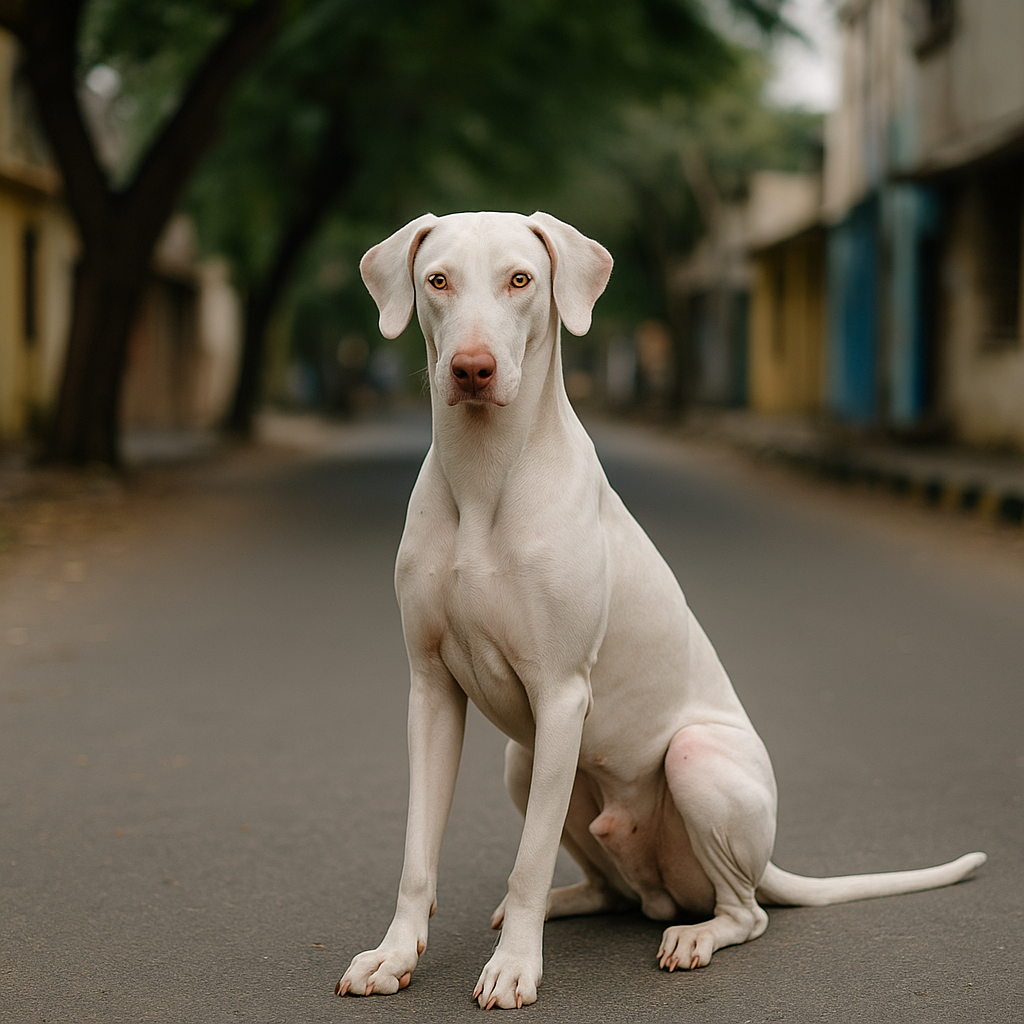Once sidelined by foreign breeds, India’s indigenous dogs like the Rajapalayam, Kombai, Chippiparai, and Mudhol are witnessing a revival, thanks to cultural pride, official support, and a growing movement for responsible adoption.
A Heritage at Risk
For centuries, India’s native dogs commanded respect and loyalty. The Rajapalayam, a stately white hound with a rose-tinted nose and piercing golden eyes, was a warrior’s companion during the Carnatic and Polygar wars. The Kombai, muscular and fearless, was cherished by zamindars of Tamil Nadu and even made its way into the ranks of Tipu Sultan’s army. Swift hunters like the Chippiparai and Kanni were prized for their agility and elegance, while the Mudhol Hound became synonymous with stamina and speed.
But with the spread of imported breeds like Labradors and German Shepherds, these native companions fell into neglect. Urban families preferred Western breeds, while many indigenous lines dwindled, putting some at risk of extinction. Breeders and conservationists warned that without deliberate effort, these dogs—symbols of India’s history and resilience—might vanish.
From Mann Ki Baat to Policy Action
The revival began with a symbolic push. In 2020, Prime Minister Narendra Modi, during his Mann Ki Baat address, appealed to Indians to adopt local breeds instead of imported ones. He singled out Rajapalayam, Kanni, Chippiparai, and Kombai, stressing their adaptability to India’s climate and their loyal, hardy nature. His call resonated at a time when cultural pride and the Atmanirbhar Bharat movement were gaining momentum.
States like Tamil Nadu soon followed with institutional support. The Animal Husbandry Department launched an online portal to sell native breeds transparently, curbing illegal trade and ensuring pedigree authentication. The renovated Saidapet Native Dog Conservation Centre now houses breeding programs for Rajapalayam, Kombai, Chippiparai, and Kanni, ensuring genetic purity and structured care.
Meanwhile, the armed forces have begun deploying Mudhol Hounds, Rajapalayams, and Chippiparai in patrol and detection roles, recognizing their unmatched stamina and sharp instincts.
Challenges Ahead for a Sustainable Future
Despite the momentum, experts stress caution. Native hounds are not “designer pets”—they need space, exercise, and environments aligned with their instincts. The Rajapalayam, for instance, thrives in open terrain but may struggle in a cramped apartment. Conservationists call for responsible adoption, public education on breed temperament, and strict checks against inbreeding.
At the same time, breeders report a surge in demand, with prices for Rajapalayam and Kombai puppies rising from ₹2,000 a decade ago to over ₹15,000 today. While this signals renewed value, it also risks commercialization without adequate safeguards.
What emerges is a cultural renaissance. The revival of these breeds is not merely about dogs—it is about reclaiming heritage, balancing tradition with modernity, and ensuring that the loyalty of India’s oldest companions is never forgotten again.


